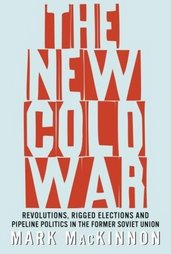
Just a quick post to highlight Novaya Gazeta's editorial today (it's here in imperfect English, which is nonetheless a first for NG) on the arrest of 10 suspects in connection with Anna Politkovskaya's murder last fall. It's a very carefully worded piece, one that takes pains to praise the police work, but one that also makes it clear that this story isn't over yet.
The newspaper has been conducting its own investigation of who killed their prominent reporter, and editor Dmitry Muratov confirmed that the 10 people arrested - a group that includes three members of a Chechen crime family as well as one FSB officer, one police major and three former police officers - were the same people that Novaya Gazeta's investigation was pointing towards. So the paper gives cautious kudos to Prosecutor-General Yury Chaika.
But the paper also says that it believes the 10 men arrested yesterday were contract killers. Charging them is half the prosecution's task here, the other half is to find out who hired them and to bring them to justice.
While noting that many people had reason to hold a grudge against Politkovskaya, whose tenacious and aggressive reporting work is said to have angered President Vladimir Putin and Chechen leader Ramzan Kadyrov among many others, the paper nonetheless suggests it knows who the contract killers' "clients" were.
Promising to reveal what it knows later, the paper hints quite strongly that charging the real perpetrators will require an act of bravery from Chaika and his investigators and could have an impact on the coming Duma and presidential elections:
It’s too early to talk about those who ordered this murder; the coming elections... may cause political special operations around the circumstances of Politkovskaya's murder. Besides, we don’t yet have any guarantees that the real clients’ names will be mentioned in the indictment. And that wouldn’t be investigation’s fault.
We have repeated many times that we don’t have claims against those who investigate the murder of Novaya Gazeta’s journalist. We are collaborating [with them], and the mutual opinion is that this collaboration is effective. We just want to be sure that “expediencies” that don’t relate to this matter directly, wouldn’t influence the outcome of our joint work. The outcome we need is clear. The killers, accomplices and real clients of this murder must be established and convicted.
Sounds like they're hoping another shoe will drop soon. I've read that Novaya Gazeta will go ahead and publish what it knows on Oct. 7, the anniversary of Politkovskaya's murder.
Robert Amsterdam, who as a member of Mikhail Khodorkovsky's defense team knows something about politically charged investigations in Russia, adds his own pessimistic analysis of the arrests here.











